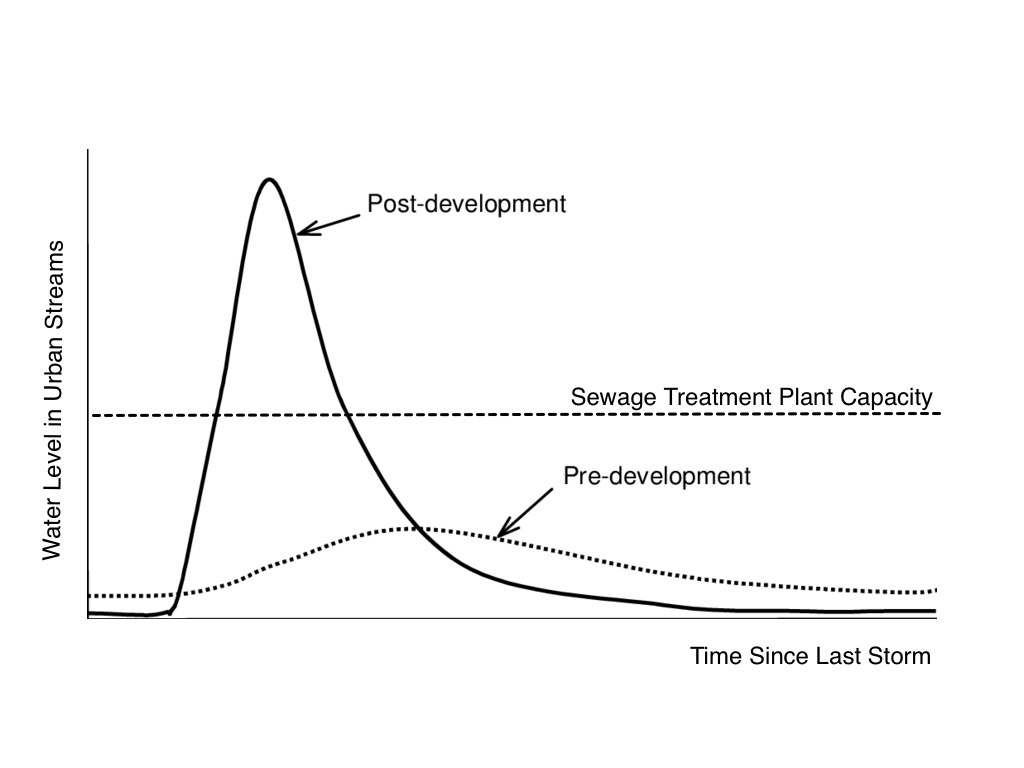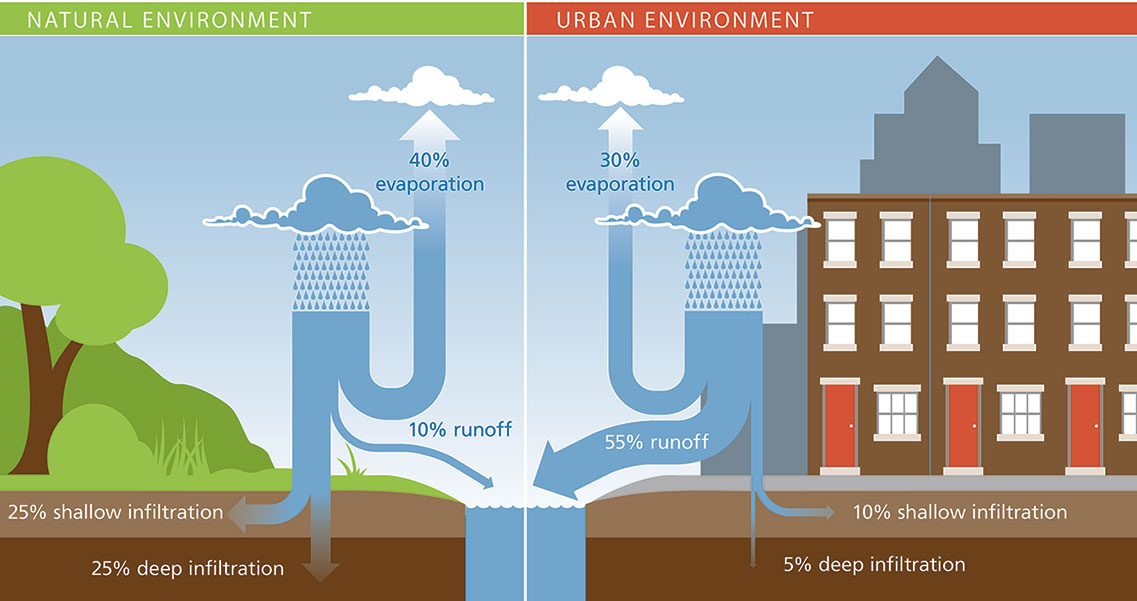At the time of this post (3/12/2020) not a single Temple University student, staff or faculty member has tested positive for the coronavirus. Yet next Monday Temple University switches to online-only instruction in and effort to encourage “social distancing.” No one believes social distancing can completely stop the spread of the virus. The goal is to flatten the curve, as discussed in this New York Times article (figure credited to visual-data journalist Rosamund Pearce). Let’s hope that social distancing can slow the spread enough that the healthcare system is not overwhelmed.
When I saw this graph, I immediately drew a parallel with this figure.
 This is a hydrograph, which shows the water level in streams over time, right after a storm. Before urbanization, the water from storms took longer to reach the streams. There was less runoff because much of the stormwater infiltrated and flowed slowly underground as shown in the figure created by the Philadelphia Water Department.
This is a hydrograph, which shows the water level in streams over time, right after a storm. Before urbanization, the water from storms took longer to reach the streams. There was less runoff because much of the stormwater infiltrated and flowed slowly underground as shown in the figure created by the Philadelphia Water Department.

In Philadelphia, stormwater flows quickly over pavement into storm drains where it is piped directly to the nearest sewage treatment plant. After large storms, the treatment systems are overwhelmed and mixture of untreated sewage and stormwater is discharged directly into our waterways.
Green infrastructure initiatives are all about controlling runoff. If enough stormwater infiltrates into the ground or is delayed by retention basins, green roofs, rain gardens, and tree trenches, then the treatment plants can keep up.
Whether controlling pandemics or stormwater runoff — it’s all about flattening the curve!
